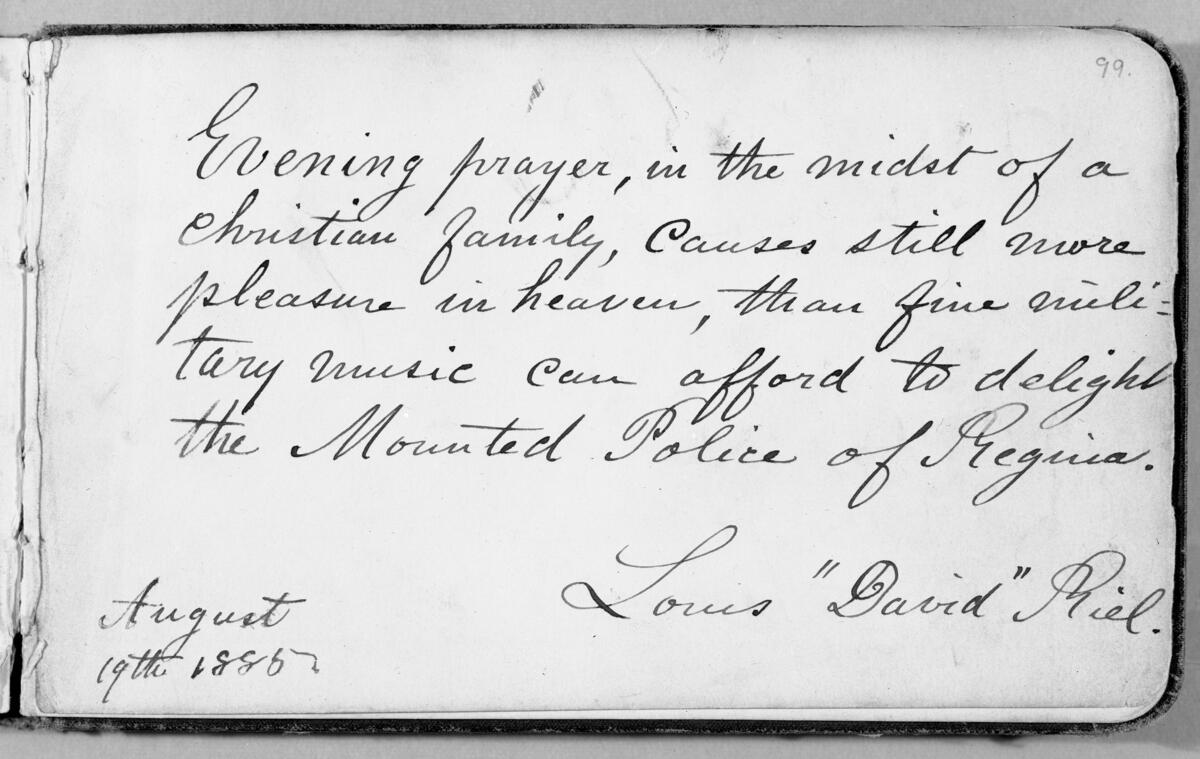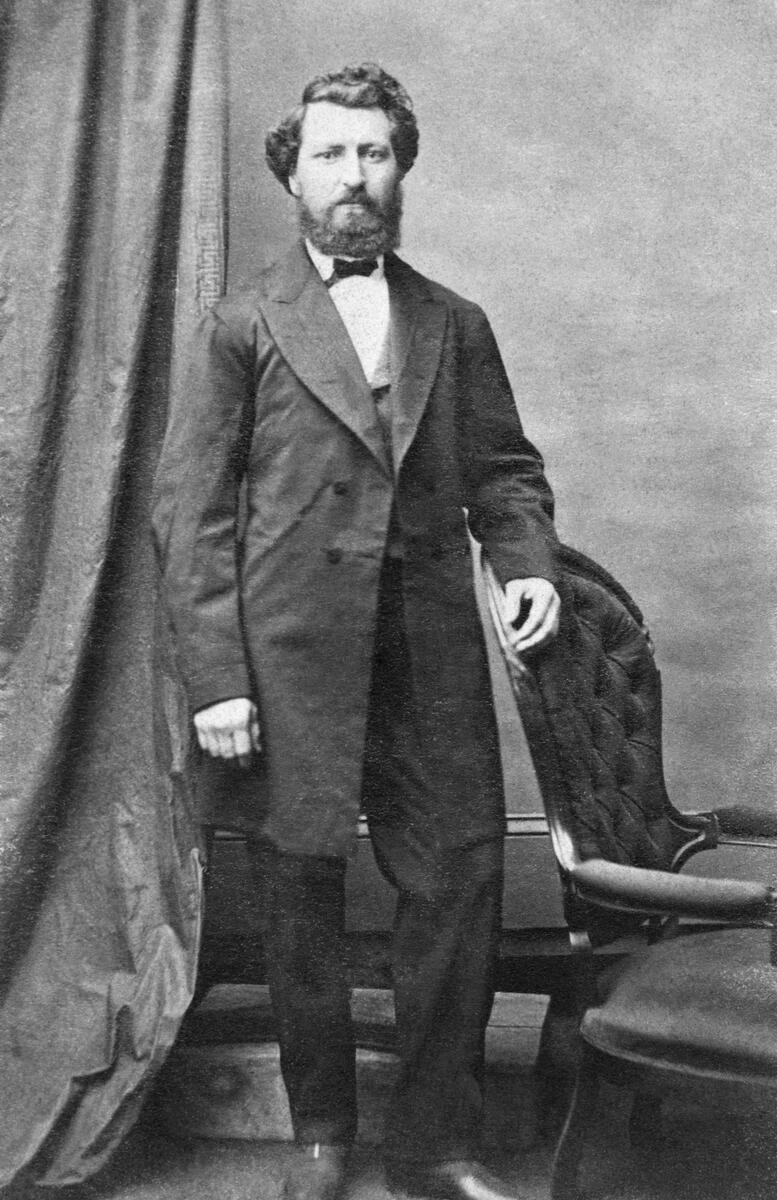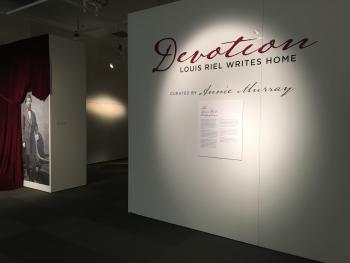Image Caption
Local Journalism Initiative Reporter
Windspeaker.com
Rare Books and Special Collections Librarian Annie Murray at the University of Calgary couldn’t believe it when the owner of a rare bookstore in that southern Alberta city told her about a collection of letters from Louis Riel.
Aquila Books owner Cameron Treleaven approached Murray about “something very, very special (and asked), ‘Would you like to see it?’ And then I couldn't believe it. I brought it back to the leadership team here and I said, ‘I think there might be an opportunity to acquire these fascinating materials’.”

After over a century of ownership of the materials, descendants of one of Riel’s siblings sold the collection of about 50 items to Aquila Books. In Spring 2022, the University of Calgary purchased the single archival box containing materials that range in timeframe from 1844 to 1885.
Murray says the family members wished to remain anonymous and she would say only that the price tag for the items “was significant because Riel is someone (whose) materials…are highly coveted.”
Murray says she has never been involved in an acquisition “of a figure so important as Riel.”
“I would say he's someone that so many people admire and has a variety of meanings to people. It felt and it feels very, very special to look at the materials, to show them to people. For people to connect with them. They have a deep connection. It's family. It's sacred. To me, that is a different kind of collection,” said Murray.
She notes that a few years ago, the university began taking care of the Glenbow Museum’s Library and Archives Collection. The Riel acquisition helps provide a unique voice to a large collection of materials on western Canadian history.
The letters, 37 or 38, are handwritten and in French. Aquila Books hired someone to transcribe them into English.
Only one letter wasn’t in French, says Murray, and that was a letter written to United States President Ulysses S. Grant asking for his help for the Métis people. Murray pegs the letter to be written around 1875 as that was when Riel met Grant. She also points out that this letter contains one draft of a proposal sent to Grant. Another draft of the proposal is in Manitoba, “so I can tell he wrote and rewrote things.”
The collection also includes two notebooks, which Murray says are “incredible.” Most of one notebook is written by Riel. However, following his execution on Nov. 16, 1885, “there's others who have written passages in the book, and so I'm interested what community members, what historians make of those passages. Whose handwriting might it be? That will be someone's area of expertise,” said Murray.
The second notebook contains a transcript of the address delivered by Riel’s defence lawyer in a Regina courtroom. Riel was convicted of treason and hanged for his role in the uprising against the Canadian government.

An exhibit puts some of these letters on display. Devotion: Louis Riel Writes Home runs until Sept. 1 in the Nickle Galleries at the University of Calgary.
The focus of the exhibition is not the politics of Riel. It is instead about his private life with letters that provide “a deeper dimension of who he was as a family person, as a person who had deep relations,” said Murray.
For the exhibition, Murray has selected eight or 10 items from the 50 pieces and has arranged them in a circle.
“What really impressed me was how strong the family unit was in Red River… (and) I wanted to show the relations, this circle,” she said.
“Louis Riel was, even when he was in exile, he was surrounded by his family and he surrounded them (and) there was all this love. I was showing this is a family that had letters back and forth all the time to one another whenever they could. Their bond was very strong.”
Riel was the oldest of 11 children. His father died when he was young so “he always felt this sense of responsibility as the big brother,” said Murray.
The letters in the collection include correspondence with his mother, his sister Octavia and her husband Louis Lavallee, and his brother Joseph.
There were also letters from his sister Sara, a nun who took on the name Sister Marguerite Marie.
“She was very spiritual and religious, like Louis was, and then she died when she was only 35,” said Murray.
The collection also includes newspaper clippings and an old glass plate negative photo from 1871 of Riel’s sisters Octavia and Mary.
The collection has been digitized. It’s a way to provide wider access to the material, says Murray, while protecting the originals.
The original material can be consulted though, she adds.
Having this archive is important for faculty and students at the University of Calgary, as well as Canadian historians and Métis scholars. Murray points out there are “so many papers on Métis history and…everyone is very interested in that.”
She also sees the collection as being important for Métis organizations and their members.
“Riel is such an important leader figure and a visionary figure for so many people (and)….the encounters that I've observed so far is people feel that it is very special and meaningful to have more evidence of Riel’s life,” she said.
While there are no plans at this point to make the exhibition a travelling one, Murray says that is something that could happen, noting that there are materials about Riel throughout the country.
However, if the collection does become a travelling exhibition, Murray says she won’t curate it. She says she’s interested in seeing what another curator would pull out of the archival box and choose to highlight.
“What do (they) see? What hits (them)? What resonates with (them)? Because I'm non-Indigenous, I don't have the same (background)…although I felt profoundly moved by everything and very interested in it. I'm a different subjectivity compared to someone who maybe lives in Red River,” she said.
Local Journalism Initiative Reporters are supported by a financial contribution made by the Government of Canada.

